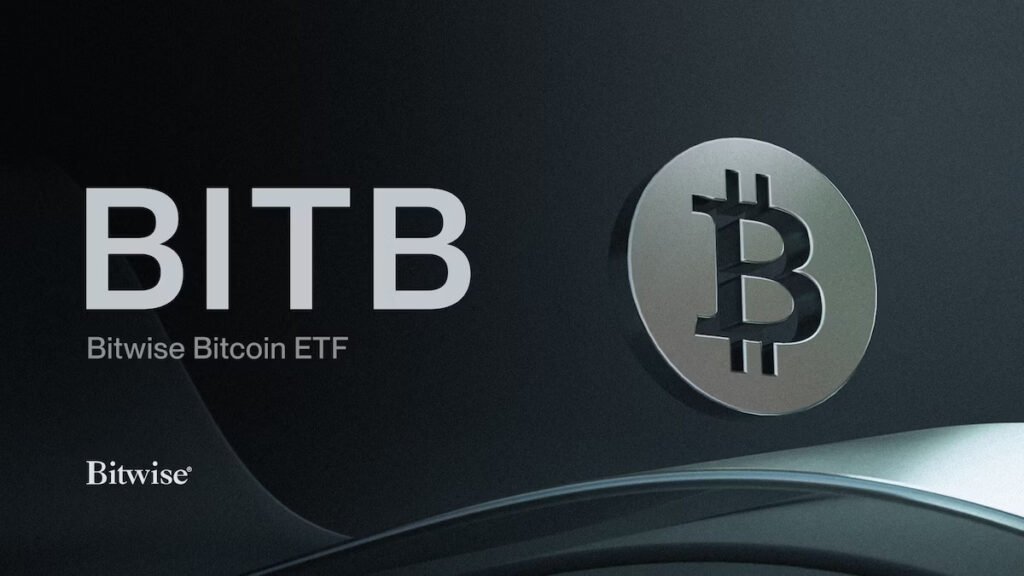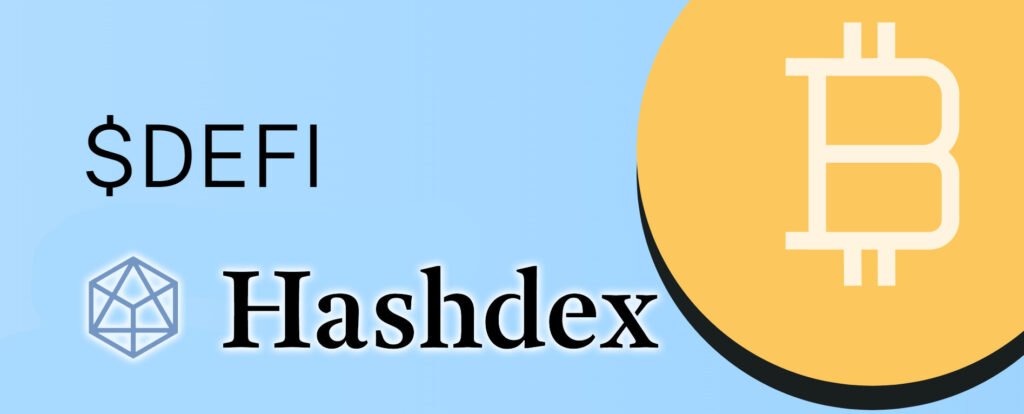1. Introduction – What Is An ETF ?
Exchange-Traded Funds, commonly known as ETFs, have gained significant popularity in the world of finance. But what exactly are they?
In simple terms, an ETF is a type of investment fund that operates much like a mutual fund, offering investors a way to diversify their portfolios without the need for a large amount of capital.
Definition and Function
At its core, an ETF is a basket of securities, such as stocks, bonds, or commodities, that trades on an exchange, just like individual stocks.
It differs from traditional mutual funds in that it can be bought or sold throughout the trading day at market prices.
This provides investors with flexibility and liquidity, as they can execute trades whenever the market is open.
Tracking and Performance
ETFs are designed to track the performance of a specific index, sector, commodity, or other asset.
For example, the SPDR S&P 500 ETF (SPY) mirrors the performance of the S&P 500 Index, one of the most widely followed benchmarks for the U.S. stock market.
By investing in an ETF, investors gain exposure to a diversified portfolio of assets, helping to spread risk and potentially enhance returns.
Types of ETFs
ETFs come in various forms, catering to different investment objectives and strategies.
Some ETFs passively track an index, aiming to replicate its performance, while others are actively managed, with portfolio managers making investment decisions.
Additionally, there are ETFs focused on specific asset classes, such as bonds, stocks, commodities, currencies, and even cryptocurrencies like Bitcoin.
Benefits and Considerations
One of the key benefits of ETFs is their low expense ratios and fewer broker commissions compared to buying individual securities.
They also offer diversification and flexibility, allowing investors to easily adjust their asset allocation.
However, it’s essential to consider factors such as liquidity, tracking error, and the underlying assets when investing in ETFs.
In summary, ETFs provide investors with a convenient and cost-effective way to access a diversified portfolio of assets.
Whether you’re looking to build wealth over the long term or capitalize on short-term market opportunities, ETFs offer a versatile investment solution.
2. Exchange-Traded Funds and Cryptocurrency
Cryptocurrency has emerged as a significant player in the financial world, and with it, the rise of cryptocurrency exchange-traded funds (ETFs).
But what exactly are these ETFs, and how do they work? Let’s break it down.
What Are Cryptocurrency ETFs?
Cryptocurrency ETFs offer investors a way to gain exposure to cryptocurrencies without the need to buy and store digital assets themselves.
Similar to traditional ETFs, cryptocurrency ETFs trade on stock exchanges, allowing investors to hold them in standard brokerage accounts.
How Do They Work?
There are two main types of cryptocurrency ETFs: spot ETFs and futures ETFs. Spot ETFs directly hold cryptocurrencies, providing investors with exposure to the performance of digital assets.
On the other hand, futures ETFs invest in futures contracts for cryptocurrencies, tracking their price movements indirectly.
Spot Cryptocurrency ETFs
Spot ETFs hold cryptocurrencies directly, mimicking the performance of the digital assets they contain.
Investors buy and sell shares of these ETFs, which are backed by the underlying cryptocurrencies held by the fund.
Spot ETFs offer investors more liquidity in the crypto market and a chance to gain exposure to these assets without the complexities of direct ownership.
Cryptocurrency Futures ETFs
Futures ETFs track cryptocurrency prices by investing in futures contracts, agreements to buy or sell crypto at a predetermined date and price.
These ETFs hold portfolios that mirror changes in the prices of derivatives, providing investors with exposure to crypto futures contract prices.
Advantages of Cryptocurrency ETFs
- Exposure Without Ownership: Cryptocurrency ETFs provide exposure to crypto without the additional expenses and risks of direct ownership, such as custody charges and transaction fees.
- Lowering the Learning Curve: Investing in cryptocurrency ETFs makes it easier for average investors to enter the crypto market without needing to understand complex technical jargon.
- More Security for Investors: Cryptocurrency ETFs offer a level of security by managing the storage and security of digital assets on behalf of investors.
Disadvantages of Cryptocurrency ETFs
- Tracking Error: Crypto ETFs may not always replicate the price movements of the underlying digital tokens, especially those relying on futures contracts.
- Higher Fees: Cryptocurrency ETFs can have higher expense ratios compared to traditional ETFs, potentially impacting investors’ returns.
- Volatility: Despite simplifying crypto trading, ETFs are still subject to the dramatic price swings of the crypto markets, posing risks for investors.
Alternatives to Cryptocurrency ETFs
Investors seeking exposure to cryptocurrencies can explore alternatives such as crypto trusts, investing in companies holding crypto, or crypto-related ETFs that focus on blockchain technology companies.
Cryptocurrency ETFs offer investors a convenient way to gain exposure to the crypto market without the complexities of direct ownership.
However, they come with their own set of advantages and disadvantages, and investors should carefully consider their investment goals and risk tolerance before diving into this evolving asset class.
3. History Of The Bitcoin ETF
Exploring the evolution of Bitcoin ETFs unveils a narrative stretching across more than a decade, characterized by notable milestones and regulatory challenges.
Let’s take a closer look at the historical events, beginning with the very start – the inception of Bitcoin itself.
2008: The Birth of Bitcoin
The story begins with the introduction of Bitcoin by the mysterious entity known as “Satoshi Nakamoto.” This groundbreaking concept laid the foundation for a digital currency revolution.
2010: The First Retail Transaction

Image: yellowpages.com
A pivotal moment arrives when a user conducts the first retail transaction using Bitcoin, purchasing two Papa John’s pizzas for a staggering 10,000 bitcoins.
This event highlights the early adoption and potential utility of Bitcoin as a medium of exchange.
2013: The Genesis of Bitcoin ETF Proposals
Bitcoin’s popularity surges, prompting Cameron and Tyler Winklevoss, co-founders of Gemini crypto exchange, to file their inaugural application with the SEC for a spot Bitcoin ETF.
Concurrently, Grayscale Investments launches the Bitcoin Investment Trust, pioneering indirect exposure to Bitcoin for investors.
2016: Regulatory Adjustments
The Winklevoss brothers adapt their ETF application, refining details such as the exchange and naming State Street as administrator.
Meanwhile, Grayscale endeavors to convert its Bitcoin trust into a spot Bitcoin ETF, aiming to offer investors direct exposure to the digital asset.
2017: Initial Regulatory Setbacks
Despite efforts, the SEC rejects the Winklevoss twins’ first ETF application due to concerns over the maturity of Bitcoin markets.
Similarly, Grayscale withdraws its conversion attempt, citing an underdeveloped regulatory environment.
2018: Regulatory Scrutiny Intensifies
Jay Clayton’s SEC delivers a blow to Bitcoin ETF hopes, rejecting multiple proposals in a single day.
Concerns about market manipulation and inadequate investor protections hinder progress, casting a shadow over the viability of Bitcoin ETFs.
2020: Progress Amidst Challenges
Grayscale takes a significant step by transforming its trust into an SEC-reporting entity, enhancing transparency and accessibility for investors.
However, the absence of a direct Bitcoin ETF persists due to ongoing regulatory hurdles.
2021: Renewed Optimism

Image: By U.S. Securities and Exchange Commission
Gary Gensler assumes the role of SEC Chair, signaling a shift in regulatory attitude towards Bitcoin ETFs.
Gensler’s openness to considering futures-based ETFs reignites optimism, prompting a surge in new filings and industry anticipation.
2022: Regulatory Setbacks
Despite the hopeful outlook, the SEC rejects numerous spot Bitcoin ETF applications, including those from industry giants like SkyBridge and Fidelity.
Market turbulence and regulatory uncertainties contribute to the challenges faced by Bitcoin ETF issuers.
2023: A Year of Legal Battles and New Applications
Legal battles ensue as Grayscale contests the SEC’s rejection, signaling continued efforts to push for a spot Bitcoin ETF.
Meanwhile, Cathie Wood’s ARK Investments and BlackRock file spot Bitcoin ETF applications, fueling hopes for regulatory breakthroughs.
2024: The Dawn of Spot Bitcoin ETFs
The SEC grants approval to 11 spot Bitcoin ETF proposals from industry leaders like BlackRock, Fidelity, and VanEck, marking a significant milestone in the evolution of Bitcoin investing.
With regulatory barriers gradually receding, investors eagerly await the debut of spot Bitcoin ETFs.
Despite setbacks and regulatory challenges, the relentless pursuit of a spot Bitcoin ETF underscores the resilience and determination of market participants.
4. The Bitcoin Spot ETF

Following the long-awaited approval by the U.S. Securities and Exchange Commission (SEC) on Jan 10, 2024, the first U.S. exchange-traded fund (ETF) tracking the price of bitcoin has finally come into existence.
This approval marks a significant milestone for the digital asset industry, which has pursued the launch of such a product for over a decade.
But what exactly is a Spot Bitcoin ETF? Let’s break it down.
What Is a Spot Bitcoin ETF?
A spot bitcoin exchange-traded fund (ETF) is an investment vehicle that allows ordinary investors exposure to the price movements of bitcoin in their regular brokerage accounts.
Unlike bitcoin futures ETFs, a spot bitcoin ETF invests directly in bitcoins as the underlying asset, rather than derivatives contracts based on their prices.
Spot bitcoin ETFs provide a regulated and accessible way for mainstream investors to invest in the digital currency.
However, investors should be aware that expenses like management fees and brokerage commissions still apply, albeit offset by avoiding the costs in time and exchange fees associated with buying and holding bitcoins directly.
How Spot Bitcoin ETFs Work
Spot bitcoin ETFs securely hold bitcoins in a digital vault, managed by registered custodians. The ETF aims to mirror the price of bitcoins in the crypto market.
Initially, the ETF purchases bitcoins from other holders or through authorized cryptocurrency exchanges, storing them in a digital wallet with multiple layers of security to reduce risks like hacking.
After acquiring bitcoins, the ETF issues shares corresponding to the number of bitcoins held.
The ETF share price reflects the prevailing market price of the cryptocurrency, and these shares are publicly tradable on traditional stock exchanges.
To maintain alignment with bitcoin prices, the ETF occasionally rebalances its holdings by buying or selling tokens.
Spot Bitcoin ETFs vs. Other Bitcoin ETFs
Spot bitcoin ETFs and derivatives-based bitcoin ETFs differ in structure and exposure to bitcoin’s price changes.
While spot bitcoin ETFs directly hold bitcoins, derivatives-based ETFs use financial instruments like futures contracts to replicate bitcoin’s prices.
Spot bitcoin ETFs offer direct ownership of bitcoins, making them more straightforward for investors.
In contrast, derivatives-based ETFs can be more opaque, as their value is derived indirectly from futures contracts.
Pros and Cons of Spot Bitcoin ETFs
Pros:
- Convenience and accessibility for mainstream investors
- Enhanced liquidity and ease of trading
- Regulatory oversight providing investor protection
- Potential tax benefits in certain jurisdictions
Cons:
- Market volatility inherent to cryptocurrencies
- Regulatory uncertainty and lack of established standards
- Security risks associated with digital storage
- Management fees and tracking error
The approval of 11 spot bitcoin ETFs by the SEC signals a significant shift in regulatory stance.
While uncertainties remain, the launch of these ETFs opens up new avenues for investors to participate in the crypto market.
5. How To Invest In Bitcoin Spot ETF?
With the recent approval of 11 spot Bitcoin ETFs by the SEC, investing in Bitcoin has become more accessible to average investors looking to venture into the cryptocurrency space.
These approved ETFs are as follows:
ARK 21Shares Bitcoin ETF (ARKB)

Image: ark-funds.com
- Issuer: ARK Invest & 21Shares
- Fee (after waiver): 0% (0.21%)
- Waiver details: 6 months or $1 billion
- Exchange: CBOE
Bitwise Bitcoin ETF Trust (BITB)

Image: bitbetf.com
- Issuer: Bitwise
- Fee (after waiver): 0% (0.20%)
- Waiver details: 6 months or $1 billion
- Exchange: NYSE
Fidelity Wise Origin Bitcoin Trust (FBTC)

Image: Fidelity Investments
- Issuer: Fidelity
- Fee (after waiver): 0% (0.25%)
- Waiver details: Until July 31, 2024
- Exchange: CBOE
Franklin Bitcoin ETF (EZBC)

Image: franklintempleton.com
- Issuer: Franklin
- Fee (after waiver): 0.29%
- Waiver details: n/a
- Exchange: CBOE
Grayscale Bitcoin Trust (conversion) (GBTC)

Image: grayscale.com
- Issuer: Grayscale
- Fee (after waiver): 1.50%
- Waiver details: n/a
- Exchange: NYSE
Hashdex Bitcoin ETF (DEFI)

Image: hashdex-etfs.com
- Issuer: Hashdex
- Fee (after waiver): 0.90%
- Waiver details: n/a
- Exchange: NYSE
Invesco Galaxy Bitcoin ETF (BTCO)

Image: Invesco.com
- Issuer: Invesco & Galaxy
- Fee (after waiver): 0% (0.39%)
- Waiver details: 6 months or $5 billion
- Exchange: CBOE
iShares Bitcoin Trust (IBIT)
Image: By BlackRock – https://www.ishares.com
- Issuer: BlackRock
- Fee (after waiver): 0.12% (0.25%)
- Waiver details: 12 months or $5 billion
- Exchange: Nasdaq
Valkyrie Bitcoin Fund (BRRR)
Image: https://valkyrieinvest.com/brrr/
- Issuer: Valkyrie
- Fee (after waiver): 0% (0.49%)
- Waiver details: 3 months
- Exchange: Nasdaq
VanEck Bitcoin Trust (HODL)
Image: vaneck.com
- Issuer: VanEck
- Fee (after waiver): 0.25%
- Waiver details: n/a
- Exchange: CBOE
WisdomTree Bitcoin Trust (BTCW)
Image: ir.wisdomtree.com
- Issuer: WisdomTree
- Fee (after waiver): 0% (0.3%)
- Waiver details: 6 months or $1 billion
- Exchange: CBOE
Where to Buy Spot Bitcoin ETFs
Spot Bitcoin ETFs are now tradable on various online brokerage and robo-advisor platforms.
These ETFs are also eligible for use in many retirement accounts, including Bitcoin IRAs, traditional IRAs, Roth IRA accounts, and solo 401(k) plans.
Fees
When selecting spot Bitcoin ETFs, it’s crucial to analyze the associated fees.
Many issuers are currently offering fee waivers to encourage investments.
For instance, Bitwise has waived some fees, including the sponsor’s fee for the first six months, while Ark Funds is waiving all its fees temporarily.
Investors should be aware that these fee waivers are temporary, as platforms offering them are competing for investors.
Additionally, management fees can significantly impact profits, so investors should aim for funds with annual management fees between 0.2% and 0.5%.
Comparing Platforms
Various self-directed brokerages and robo-advisor platforms offer spot Bitcoin ETFs, each with its own account minimums and available crypto assets.
Here’s a comparison:
Self-Directed Brokerages:
- Fidelity: $0 account minimum, offers coins and ETFs
- Robinhood: $0 account minimum, offers coins and ETFs
- Charles Schwab: $0 account minimum, offers ETFs
- E*TRADE: $0 account minimum, offers ETFs
- Interactive Brokers: $0 account minimum, offers coins and ETFs
- eToro: $10 for stocks and ETFs, $200 for CopyTrader, offers coins and ETFs
- tastytrade: $0 account minimum, offers coins and ETFs
- Lightspeed: $10,000 (web and mobile), $25,000 (software), offers coins and ETFs
Robo-Advisors:
- Sofi Automated Investing: $1 account minimum, offers ETFs
Steps to Investing in Spot Bitcoin ETFs
Investing in spot Bitcoin ETFs involves the following steps:
- Open a brokerage account: Select a company that offers spot Bitcoin ETFs and open an online brokerage account.
- Fund the account: Many brokerage platforms allow funding from other platforms or a regular bank account. Ensure you fund the account adequately to cover the ETF shares’ cost, fees, and commissions.
- Research available Bitcoin ETFs: Look into the ETFs’ trading volume, assets under management, and issuer reputation.
- Select preferred Bitcoin ETFs: Choose an ETF that aligns with your budget and investment goals.
- Place an order: Buy your chosen Bitcoin ETF through a market or limit order.
- Monitor your investments: Keep track of your investment, watch Bitcoin charts, and stay informed about related news that may affect ETF volatility.
6. Interesting Fact

Image: Cameron and Tyler Winklevoss Photographer: David Paul Morris/Bloomberg
Did you know that the Winklevoss twins, famous for their role in the early days of Bitcoin and their legal battles over Facebook’s creation, once proposed a Bitcoin ETF called “COIN” to the U.S. Securities and Exchange Commission (SEC) in 2013?
Despite facing rejection due to concerns about market manipulation and regulation, the twins persisted in their efforts.

Image: Gemini.com
They later founded Gemini, a regulated cryptocurrency exchange, and continued their quest for a Bitcoin ETF approval.
Their perseverance ultimately paid off, leading to the approval of a Bitcoin ETF in Canada.